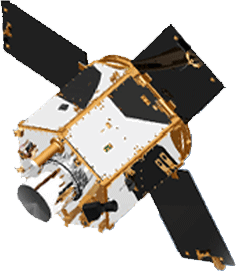 RazakSAT | |
| Operator | Astronautic Technology Sdn Bhd (ATSB) |
|---|---|
| COSPAR ID | 2009-037A |
| SATCAT no. | 35578 |
| Spacecraft properties | |
| Launch mass | Instruments: 50 kilograms (110 lb) Total: 180 kilograms (400 lb) |
| Power | 300 watts |
| Start of mission | |
| Launch date | 14 July 2009, 03:35 UTC |
| Rocket | Falcon 1 |
| Launch site | Omelek |
| Contractor | SpaceX |
| End of mission | |
| Last contact | December 2010 |
| Orbital parameters | |
| Reference system | Geocentric |
| Regime | Low Earth |
| Perigee altitude | 667 kilometers (414 mi)[1] |
| Apogee altitude | 691 kilometers (429 mi)[1] |
| Inclination | 8.910 degrees[1] |
| Period | 98.20 minutes[1] |
| Epoch | 25 January 2015, 03:33:28 UTC[1] |
| Main camera | |
| Name | Medium-sized Aperture Camera (MAC) |
RazakSAT was a Malaysian Earth observation satellite carrying a high-resolution camera. It was launched into low Earth orbit on 14 July 2009. It was placed in a near-equatorial orbit that presents many imaging opportunities for the equatorial region. It weighs over three times as much as TiungSAT-1 and carries a high-resolution Earth observation camera. Developed in conjunction with the Satrec Initiative, the satellite's low inclination (9 degrees) brought it over Malaysia a dozen or more times per day. This was intended to provide greatly increased coverage of Malaysia compared to most other Earth observation satellites.[2] An audit report released in October 2011 revealed that the satellite had failed after one year of operation.[3]
RazakSAT was the only operational satellite to be put into orbit by SpaceX's Falcon 1.
- ^ a b c d e "RAZAKSAT Satellite details 2009-037A NORAD 35578". N2YO. 25 January 2015. Retrieved 25 January 2015.
- ^ "Falcon 1 Flight 5". SpaceX. Archived from the original on 2011-01-04.
- ^ "RM142m RazakSAT faulty after just one year, says federal auditor - The Malaysian Insider". themalaysianinsider.com. Archived from the original on 2014-10-14. Retrieved 2014-09-13.